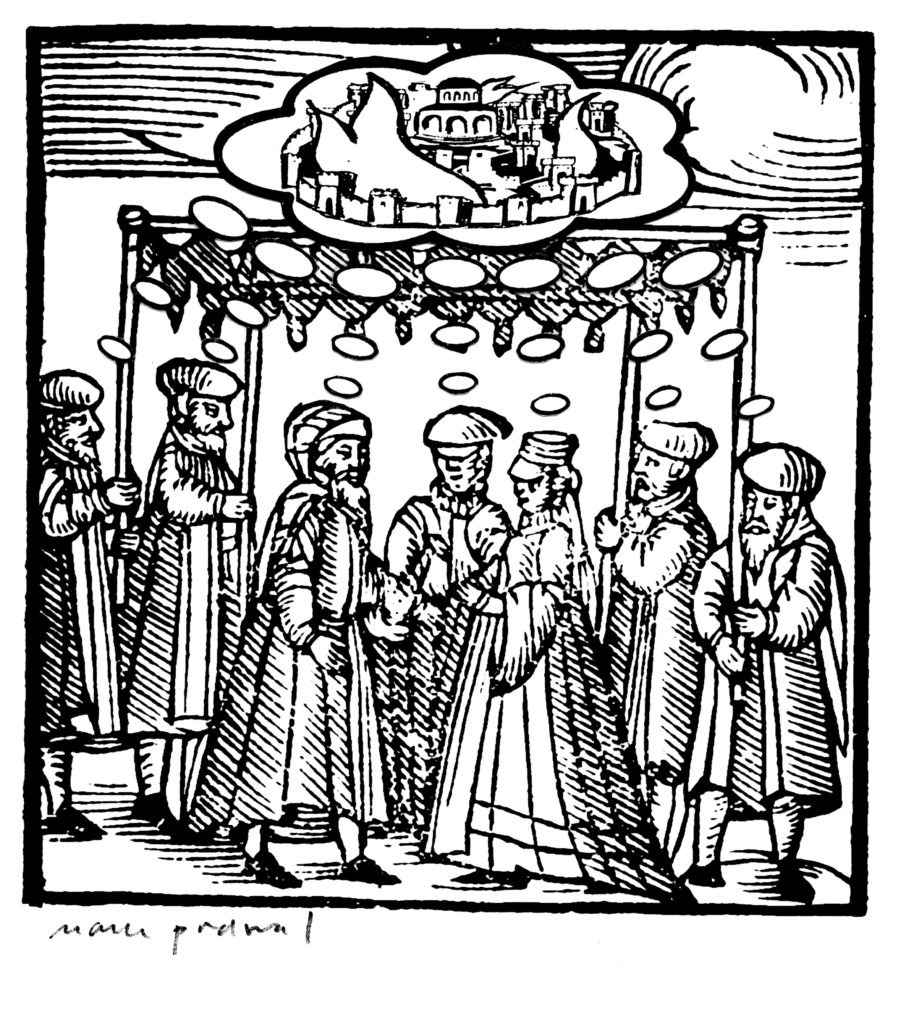Wedding
Mark Podwal (b. 1945)
Digitial archival pigment print on paper
7 7/16 x 7 9/16″
USA, 2020
© Mark Podwal
The origins of the chuppah—the fabric canopy under which a Jewish wedding takes place—are rather ambiguous. The chuppah is often understood as symbolizing the Jewish home the new married couple will create together. The customarily used four-poled open canopy design for wedding ceremonies had its origins in the Middle Ages. Open on all sides, the chuppah has come to represent hospitality to guests, just as the patriarch Abraham’s tent was open to welcome strangers. Traditionally, there should be open sky above the chuppah. A chuppah under the stars alludes to God’s promise to “multiply your seed as the stars of heaven” (Exodus 32:13). It may also allude to God’s blessing to Abraham, that his children shall be “as numerous as the stars of heaven” (Genesis 26:4). A chuppah on view in the Skirball’s third floor gallery depicts the sky and stars in accordance with this tradition. Breaking a glass as part of the marriage ceremony—perhaps the most recognizable Jewish marriage practice—is discussed in the Talmud (commentative and interpretive writings) and has many explanations. According to superstition, it was hoped the shattered glass fragments would harm demons that frequent celebrations or that the noise would frighten them away. Around the fourteenth century the custom came to be interpreted as a symbolic remembrance of the destruction of the Temple based on a verse from Psalm 137:6, “Jerusalem in memory even at the happiest hour.” Other explanations include signifying the fragility of life and supplying a token of sadness, which should temper all rejoicings.

